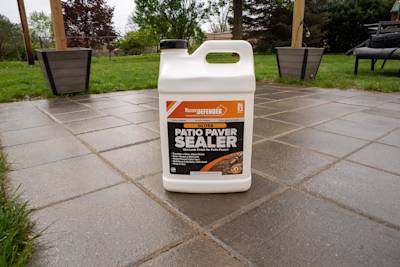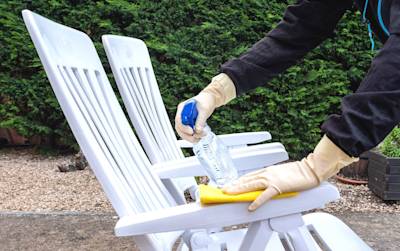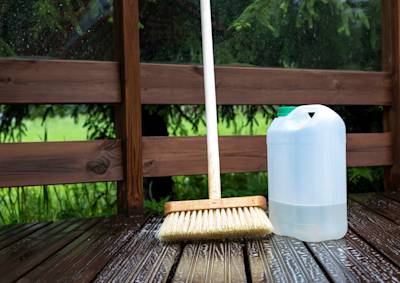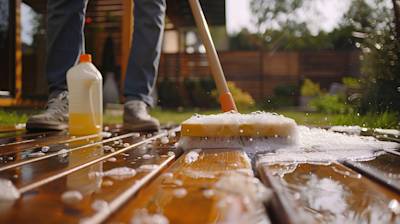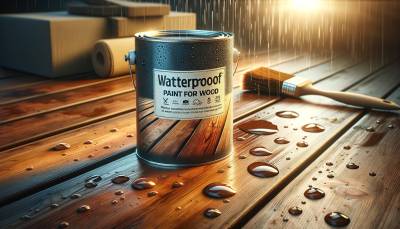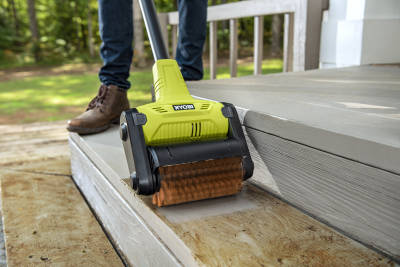Wood is a marvelous material, widely utilized in home construction and furnishings thanks to its versatility, durability and beauty. However, wood has a notorious weakness: moisture. Exposed to the elements, wood can absorb water, leading to cracks, warping, and ultimately, decay. This is where waterproof paint for wood steps in, aiding in the longevity and preservation of your wooden surfaces. Our exploration today will delve into waterproof paint for wood: what it is, its benefits, how to apply it, and tips to choose the best one from the myriad options available on the market.
The Essence of Waterproof Paint for Wood
Essentially, waterproof paint for wood is a specialized coating that creates a water-repelling layer on your wood surfaces. Its unique composition contains special resins, pigments, and solvents that harmonize to form an impermeable layer preventing water absorption by the wood. Importantly, apart from granting your wood water-resistant properties, waterproof paint also enhances its aesthetic appeal, giving a touch of color while amplifying the natural grain patterns.
The Benefits of Using Waterproof Paint for Wood
Protection Against Water Damage
The foremost advantage of waterproof paint for wood is its resistance against water. It prevents the warping and cracking generally associated with prolonged water exposure, thereby enhancing the long-term durability of the wooden structure.
Protection Against Sunlight
Many waterproof paints also integrate UV-resistant additives. This means that, along with water protection, your wooden surfaces receive protection against the damaging rays of the sun.
Enhanced Appearance
Available in an array of colors and finishes, waterproof paint not only safeguards your wood but also enhances its visual appeal. It can revitalize aging wood and add character to new installations.
Applying Waterproof Paint on Wood
Generally, applying waterproof paint for wood follows a straightforward process. Here's a step-by-step guide:
- Clean the wood: Remove any dust, debris or loose paint.
- Sand the surface: This helps the paint adhere better.
- Prime the wood: A primer serves as a base for the paint.
- Apply the paint: Use a brush or sprayer for an even application.
- Allow drying: Wait until the paint is completely dry before applying a second coat if necessary.
Choosing the Best Waterproof Paint for Wood
With the market flooded with countless waterproofing paints, making the right choice might seem daunting. Here are some factors to consider:
The Environment of your Wood
If your wood is predominantly in a moist environment, consider a high-end waterproof paint with strong moisture-resistant capabilities. A good choice might be marine paint, designed to resist the ravages of water in the harshest conditions.
Color and Finish
While protection is the priority, aesthetics matter too. Choose a color that complements the surrounding décor. Options range from reflective high-gloss to subtle matte finishes.
Durability
Select a paint that is proven durable and capable of keeping your wood safe and sound for a considerable length of time. This will involve reviewing brand reputations, user reviews, and product specifications.
Waterproof paint for wood is an essential consideration for any homeowner with wooden structures and furnishings. It guards your valued possessions against water, weather, and wear, while also enhancing their visual appeal. With an understanding of what makes a good waterproof paint, you're well on your way to making the best choice for your wooden surfaces.
Frequently Asked Questions About Waterproof Paint for Wood
Why is it recommended to use waterproof paint for wood?
Waterproof paint for wood is highly advised because it protects your wooden surfaces from various weather conditions and prevents water damage. It helps in maintaining the quality, aesthetics and durability of the wood, ensuring that it lasts for longer periods of time.
Can I use waterproof paint for all types of wood?
Yes, you can generally use waterproof paint for any type of wood. Whether it is hardwood, softwood or engineered wood, waterproof paint can be a valuable protective tool. However, each wood type may require different preparation techniques, so be sure to consult with a professional or detailed guide first.
Can I use waterproof paint for both indoor and outdoor wooden surfaces?
Yes, waterproof paint can be used for both indoor and outdoor wooden surfaces. This type of paint not only protects from rain and moisture but also from humidity, which can be crucial for the wood surfaces inside your home.
How often do I need to reapply waterproof paint on my wooden surfaces?
The reapplication of waterproof paint depends on various factors such as the quality of the existing paint, the exposure to weather conditions and wear over time. Usually, it's recommended to reapply every 1-2 years to ensure your wooden surfaces have the best protection.
Do I need to prepare my wooden surfaces before applying waterproof paint?
Yes, preparing the wooden surfaces before applying waterproof paint is crucial to achieve optimum results. This usually involves cleaning the surface, sanding it, and applying a primer. Different types of wood might require different preparation methods.
What is the best way to apply waterproof paint on wood?
Applying waterproof paint on wood is best done using a brush or a roller. It's advised to apply at least two coats, allowing sufficient drying time in between, to ensure excellent coverage and protection.
Can waterproof paint change the color of my wood surface?
Yes, waterproof paint can potentially change the color of your wood surface. Waterproof paints come in various colors, so it can provide a fresh new look for your woodworking project. If you prefer not to change the color of your wood, consider using a clear, waterproof sealant instead.
Does waterproof paint also provide protection from insects and pests?
While waterproof paint provides excellent protection against moisture and weather damage, it doesn't necessarily protect against insects and pests. There are however, specialty paints and coating products available on the market that offer both waterproofing and pest-repelling properties.
Is it safe to use waterproof paint? What precautions should I take?
It is safe to use waterproof paint! However, it is important to follow safety precautions such as using it in a well-ventilated area and wearing protective gear such as a mask and gloves, especially when working with oil-based paints that may release potentially harmful fumes.
Pros and Cons of Waterproof Paint for Wood
Pros of Using Waterproof Paint for Wood
Protection from Moisture
- One of the most significant advantages of waterproof paint for wood is its ability to protect the wood from moisture. Since wood is porous, it can absorb moisture and cause rot, warp, or mold. By applying a waterproof paint, the wood's pores are sealed, preventing any moisture absorption.
- This is particularly beneficial for outdoor wooden furniture, doors, and decking exposed to varying weather conditions. It prevents any damage from rain, humidity, and even snow.
Enhances Lifespan & Durability
- Waterproof paint also extends the life of your wooden items. Sealing the wood with waterproof paint prevents premature damage and decay, leading to increased durability. As such, items painted with waterproof paint require less frequent replacements.
- The paint also provides an extra layer of protection against scratches, dents, and marks, adding to the item's overall durability.
Improves Appearance
- Another pro of waterproof paint for wood is that it enhances the overall appearance of the item. The paint gives the wood a glossy, sleek finish that could increase the aesthetic appeal.
- In addition, waterproof paint for wood comes in a variety of colors and finishes, offering diverse options to match your home décor and style.
Cons of Using Waterproof Paint for Wood
Application Process
- The primary downside to using waterproof paint for wood is the complicated application process. It often requires multiple coats to ensure a complete seal, which can be time-consuming.
- In addition, the wood surface needs to be properly cleaned and primed before application, adding to the overall work involved.
Materials and Equipment Costs
- Using waterproof paint for wood may also not be cost-effective for everyone. The paint itself can be more expensive than regular paint. Moreover, specialized primers are often needed to ensure the paint adheres correctly to the wood, increasing the project's costs.
- The need for additional tools and equipment for the application, like quality brushes and potentially a paint sprayer, can also add to the cost.
Maintenance
- While waterproof paint does add durability, it's not immune to wear and tear and may need retouching over time. The surface may discolor or peel, particularly in high traffic areas or places exposed to heavy weather conditions. This requires regular monitoring and maintenance, which can be cumbersome for some homeowners.
Difficult Removal
- Waterproof paint for wood can be challenging to remove once applied. If you wish to change the color or switch to a different type of paint, the removal process can be intensive and require the use of strong chemical paint strippers, which is not ideal for the environment or personal health.
Limited Breathability
- Although the sealing action of waterproof paint is advantageous for protection against moisture, it also means that the wood doesn’t breathe as naturally. Trapped moisture from inside the wood may lead to bubbles or peeling paint in the long run. Therefore, it’s important to make sure the wood is thoroughly dry before applying waterproof paint.
Summary
Applying waterproof paint for wood is a smart move to prevent any kind of water damage. Over time, wood can soak up water, leading to mould growth and structural damage. With this type of paint, you'd bid goodbye to these worries. It creates an impenetrable barrier that keeps the moisture out and extends the life of your wooden structures.
Choosing waterproof paint for wood doesn't render aesthetic appeal obsolete. In fact, this type of paint comes in a variety of colours to meet different tastes and preferences. You can still achieve that beautiful, glossy finish while ensuring durability against moist and damp conditions. Not only does it preserve, but it also enhances the visual appeal of your wooden items.
Lastly, waterproof paint for wood poses minimum risk to the environment. Most options in the market today are free from harmful chemicals that could potentially harm the environment. Also, by extending the longevity of your wooden items, you help cut down the need for frequent replacements, indirectly reducing wood consumption. Truly, it's a practical choice—good for your wooden items and great for the environment.
About Grime Busters Pressure Washing
Welcome to Grime Busters Pressure Washing, your friendly, neighborhood pressure washing experts based in Vancouver, WA. With years of experience under our belts, we provide top-notch pressure washing services, promising to breathe new life into your dingy exteriors. Our team of professional cleaners uses industry-leading equipment and environmentally safe processes, ensuring a high-quality service that leaves our customers satisfied. So, whether it's your home exterior, driveway, or patio that needs a revamp, remember, we're just a call away!
Tags: waterproof paint for wood, wood protection, painting tips,



